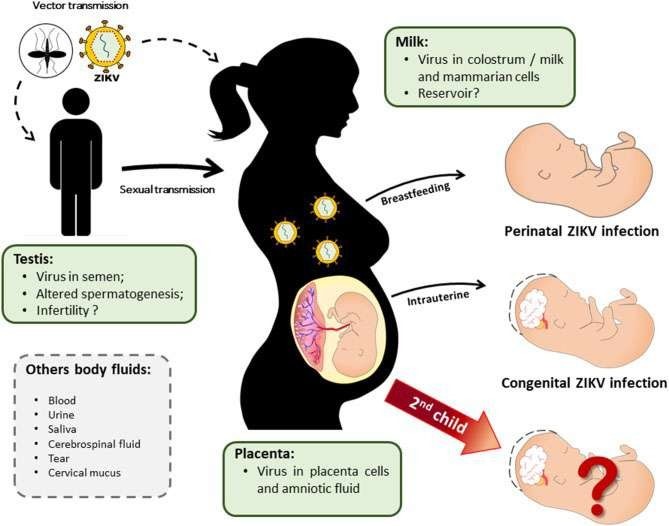A nurse is admitting an adolescent who has rubella. Which of the following actions should the nurse take?
Administer aspirin to the client.
Isolate the client from staff who are pregnant.
Initiate airborne precautions.
Monitor for the development of Koplik spots.
The Correct Answer is B

This is because rubella is a highly contagious viral infection that can cause serious harm to the developing fetus if the pregnant person gets infected. Rubella can cause congenital rubella syndrome, which can result in hearing and vision loss, heart defects and other serious conditions in newborns.
Choice A is wrong because aspirin should not be given to children or adolescents with viral infections, as it can cause Reye’s syndrome, a rare but potentially fatal condition that affects the liver and brain.
Choice C is wrong because rubella does not require airborne precautions, which are used for diseases that can spread through very small droplets that can remain in the air for long periods of time, such as tuberculosis or measles. Rubella spreads through direct contact with saliva or mucus of an infected person, or through respiratory droplets from coughing or sneezing.
Therefore, standard and droplet precautions are sufficient to prevent transmission. Choice D is wrong because Koplik spots are a characteristic sign of measles, not rubella.
Koplik spots are small white spots that appear on the inside of the cheeks before the measles rash develops. Rubella causes a pink or red rash that usually starts on the face and moves down the body.
Normal ranges for rubella antibody tests are:
- IgM: Negative or less than 0.9 IU/mL
- IgG: Negative or less than 10 IU/mL
A positive IgM result indicates a recent or current infection, while a positive IgG result indicates a past infection or immunity from vaccination.
Nursing Test Bank
Naxlex Comprehensive Predictor Exams
Related Questions
Correct Answer is A
Explanation
Prednisone is a corticosteroid medication that can cause bone loss (osteoporosis) by reducing the absorption of calcium and increasing the excretion of calcium in the urine. Therefore, patients taking prednisone should increase their intake of calcium-rich foods or supplements to prevent bone loss and fractures.
Choice B is wrong because prednisone can cause weight gain, not weight loss, by increasing appetite and fluid retention. Patients taking prednisone should monitor their weight and limit their salt and calorie intake.
Choice C is wrong because prednisone should not be taken on an empty stomach, as it can cause stomach irritation, ulcers, or bleeding. Patients taking prednisone should take it with food or milk to protect their stomachs.
Choice D is wrong because prednisone should not be scheduled at bedtime, as it can cause insomnia or difficulty sleeping. Patients taking prednisone should take it in the morning or early afternoon to avoid disrupting their sleep cycle.
Correct Answer is ["A","B","C","D","E"]
Explanation
The findings that require immediate follow-up are:.
-
- Adult child accompanying parent reports decline in client, expressing concern over memory and thought process, appetite, and self-care. Adult child states. “My sibling and I hired help at home for my parent. We thought that would help but it has not. I found the title to the car today, signed over to me.”.
- Client makes poor eye contact, speaks in a monotone voice, and has a lack of facial expression. Client reports not wanting to eat anymore. Client’s child reports their parent has lost about 8 lb in the past month.
- Client says. "Why don’t you just leave me? I am of no use.”.
These findings suggest that the client may have cognitive impairment, depression, and/or malnutrition, which can affect their health and quality of life. The nurse should perform a comprehensive assessment of the client’s cognitive, behavioral, and functional status, review their medications and possible side effects, provide education and support for healthy aging, and collaborate with interdisciplinary teams and community resources. The nurse should also evaluate the client’s home environment and lifestyle, and consider nonpharmacological approaches to manage behavioral problems. The nurse should also monitor the client’s vital signs and weight regularly.
Whether you are a student looking to ace your exams or a practicing nurse seeking to enhance your expertise , our nursing education contents will empower you with the confidence and competence to make a difference in the lives of patients and become a respected leader in the healthcare field.
Visit Naxlex, invest in your future and unlock endless possibilities with our unparalleled nursing education contents today
Report Wrong Answer on the Current Question
Do you disagree with the answer? If yes, what is your expected answer? Explain.
Kindly be descriptive with the issue you are facing.
